Optimal Capacity Configuration of a Hybrid Energy Storage System for an Isolated Microgrid Using Quantum-Behaved Particle Swarm Optimization
Abstract
:1. Introduction
2. Mathematical Models of Microsources
3. Energy Scheduling Strategy
4. Optimization Model and QPSO Algorithm
4.1. Objective Function
4.2. Constraint Condition
4.2.1. HESS Constraints
4.2.2. Constraints on the Microgrid Operation
4.2.3. QPSO Algorithm
- (a)
- Initialize particles.
- (b)
- Set the personal best positions, Pi(0) = Xi(0). The fitness value of each initial particle was evaluated and the position of the optimal individual in the group was recorded as the global initial optimal position.
- (c)
- Calculate the positions of random points using (24), and update new particles using (23).
- (d)
- Calculate the fitness values using (9), based on the aforementioned energy scheduling strategy.
- (e)
- Update the individual and global optimal location of the particle using (26) and (27).
- (f)
- Determine whether the termination condition is satisfied. If they are, the output is calculated, otherwise return to Step (c).
5. Case Study and Analysis
5.1. Optimization Results and Analysis
5.2. Comparison of Traditional PSO and QPSO
6. Simulation of a Microgrid
7. Conclusions
- (1)
- An energy scheduling strategy can make full use of the characteristics of the fast response speeds and high power densities of ultracapacitors. Frequent charging and discharging of batteries is avoided. A reasonable cooperation strategy between batteries and ultracapacitors is achieved.
- (2)
- QPSO has the advantages of good global convergence and fast convergence rate compared with traditional PSO. QPSO found the optimal solution using less iterations and reduced the daily cost of the HESS. The capacity configuration results obtained by PSO were larger than the results obtained by QPSO.
- (3)
- The simulation results indicate that the HESS keeps the microgrid system stable when there are large power imbalances. This verifies the effectiveness of the proposed HESS optimal capacity configuration method.
Acknowledgments
Author Contributions
Conflicts of Interest
References
- Kwhannet, U.; Sinsuphun, N.; Leeton, U.; Kulworawanichpong, T. Optimal allocation of energy storage in micro-grid system. In Proceedings of the 2010 International Conference on Power System Technology, Hangzhou, China, 24–28 October 2010; pp. 1–6. [Google Scholar]
- Lee, H.S.; Shin, B.Y.; Han, S.C.; Jung, S.Y. Compensation for the power fluctuation of the large scale wind farm using hybrid energy storage applications. IEEE Trans. Appl. Supercond. 2012, 22, 5701904. [Google Scholar]
- WEE, K.W.; Choi, S.S.; Vilathgamuwa, D.M. Design of a least-cost battery-super capacitor energy storage system for realizing dispatchable wind power. IEEE Trans. Sustain. Energy 2013, 4, 786–796. [Google Scholar] [CrossRef]
- Turton, H.; Moura, F. Vehicle-to-grid systems for sustainable development: An integrated energy analysis. Technol. Forecast. Soc. Chang. 2008, 75, 1091–1108. [Google Scholar] [CrossRef]
- Dougal, R.A.; Liu, S.Y.; White, R.E. Power and life extension of battery-ultracapacitor hybrids. IEEE Trans. Compon. Packag. Technol. 2002, 25, 120–131. [Google Scholar] [CrossRef]
- Deng, J.X.; Shi, J.; Liu, Y.; Tang, Y.J. Application of a hybrid energy storage system in the fast charging station of electric vehicles. IET Gener. Transm. Distrib. 2016, 10, 1092–1097. [Google Scholar] [CrossRef]
- Ma, T.; Lashway, C.R.; Song, Y.; Mohammed, O. Optimal renewable energy for future hybrid power system. In Proceedings of the 2014 17th International Conference on Electrical Machines and Systems (ICEMS), Hangzhou, China, 22–25 October 2014; pp. 2827–2832. [Google Scholar]
- Nian, Y.; Liu, S.; Wu, D.; Liu, J. A method for optimal sizing of stand-alone hybrid PV/Wind/Battery system. In Proceedings of the 2nd IET Renewable Power Generation Conference, Beijing, China, 9–11 September 2013; pp. 1–4. [Google Scholar]
- Zhou, T.P.; Sun, W. Optimization of battery-Supercapacitor hybrid energy storage station in wind/Solar generation system. IEEE Trans. Sustain. Energy 2014, 5, 408–415. [Google Scholar] [CrossRef]
- Tan, X.G.; Wang, H.; Zhang, L.; Zou, L. Multi-objective optimization of hybrid energy storage and assessment indices in microgrid. Autom. Electr. Power Syst. 2014, 38, 7–14. [Google Scholar]
- Cao, C.D.; Chang, X.R. Application of improved quantum particle swarm optimization in power Network planning. In Proceedings of the 2011 International Conference on Mechatronic Science, Electric Engineering and Computer (MEC), Jilin, China, 19–22 August 2011; pp. 2073–2077. [Google Scholar]
- Sun, J.; Fang, W.; Xu, W.B. A quantum-behaved particle swarm optimization with diversity-guided mutation for the design of two-dimension IIR digital filters. IEEE Trans. Circuits Syst. II-Express Briefs 2010, 57, 141–145. [Google Scholar] [CrossRef]
- Koutroulis, E.; Kolokotsa, D.; Potirakis, A. Methodology for optimal sizing of stand-alone photo-voltaic/wind generator systems using genetic algorithms. Sol. Energy 2006, 80, 1072–1088. [Google Scholar] [CrossRef]
- Ding, M.; Wang, B.; Zhao, B.; Chen, Z.N. Configuration Optimization of Capacity of Standalone PV-Wind-Diesel-Battery Hybrid Microgrid. Power Syst. Technol. 2013, 37, 575–581. [Google Scholar]
- Xie, X.; Wang, H.; Tian, S.; Liu, Y. Optimal capacity configuration of hybrid energy storage for an isolated microgrid based on QPSO algorithm. In Proceedings of the 2015 5th International Conference on Electric Utility Deregulation and Restructuring and Power Technologies (DRPT), Changsha, China, 26–29 November 2015. [Google Scholar]
- Sun, J.; Feng, B.; Xu, W.B. Particle Swarm Optimization with particles having quantum behavior. In Proceedings of the 2004 Congress on Evolutionary Computation Conference, Portland, OR, USA, 19–23 June 2004; pp. 325–331. [Google Scholar]
- Li, N.; Gao, F.; Hao, T.; Ma, Z.; Zhang, C. SOH Balancing Control Method for MMC Battery Energy Storage System. IEEE Trans. Ind. Electron. 2017. [Google Scholar] [CrossRef]
- Liu, K.; Zhu, C.; Lu, R.; Chan, C.C. Improved Study of Temperature Dependence. Equivalent Circuit Model for Supercapacitors. IEEE Trans. Plasma Sci. 2013, 41, 1267–1271. [Google Scholar]
- Bharath, K.V.S.; Pandey, K. Fuzzy-Based Multi-Objective Optimization for Subjection and Diagnosis of Hybrid Energy Storage System of an Electric Vehicle. In Proceedings of the International Conference on Intelligent Communication, Control and Devices, Singapore, 18 September 2016; pp. 299–307. [Google Scholar]
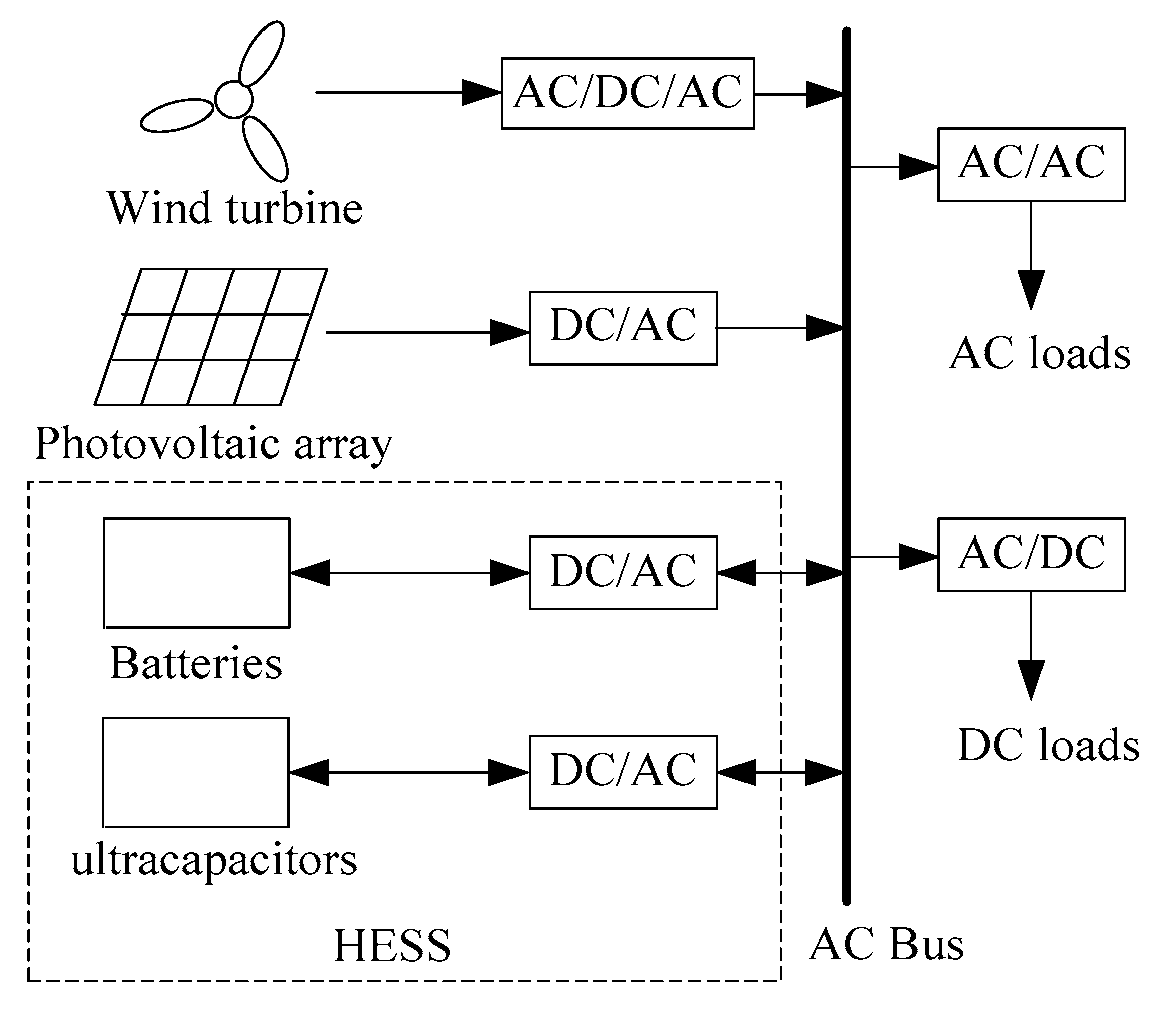
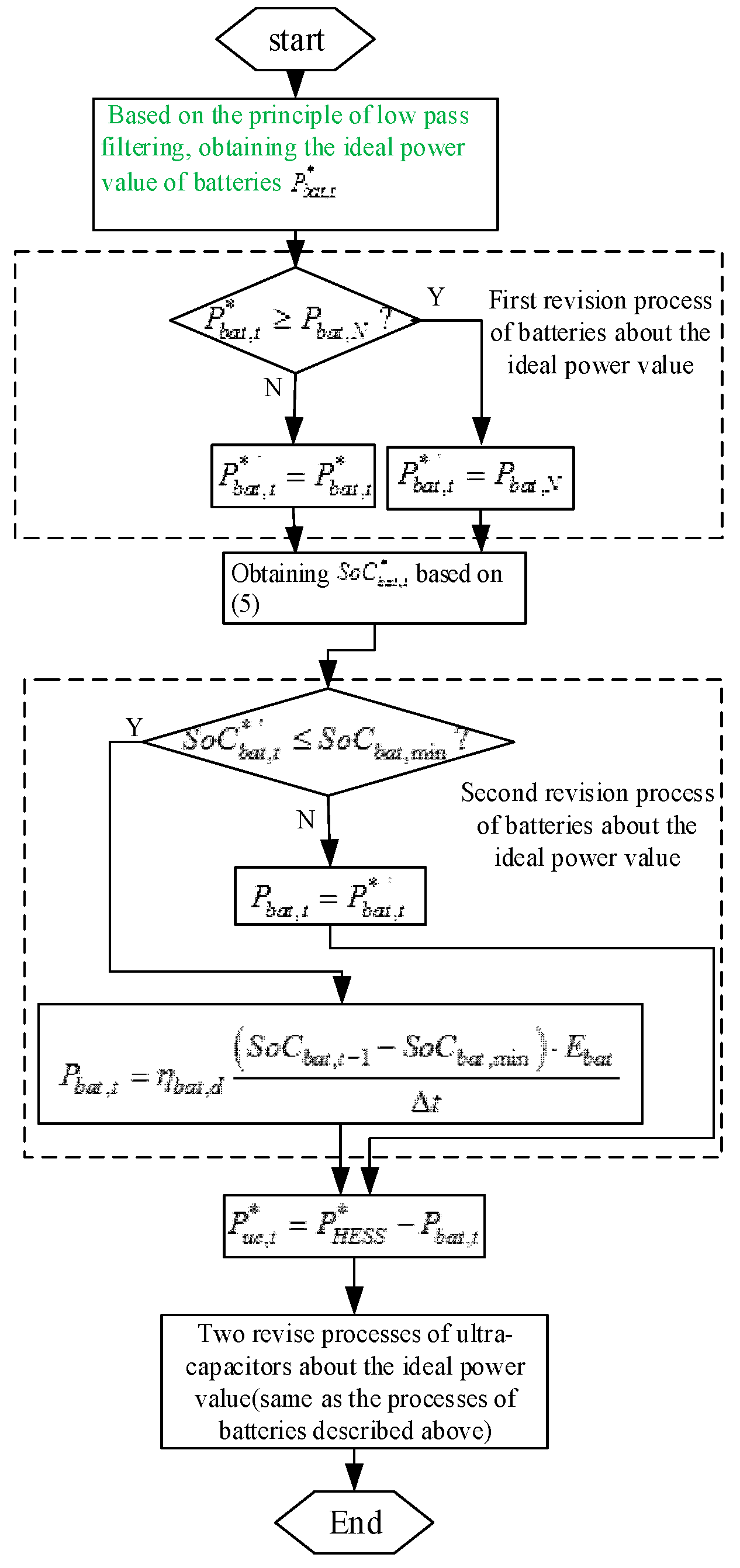
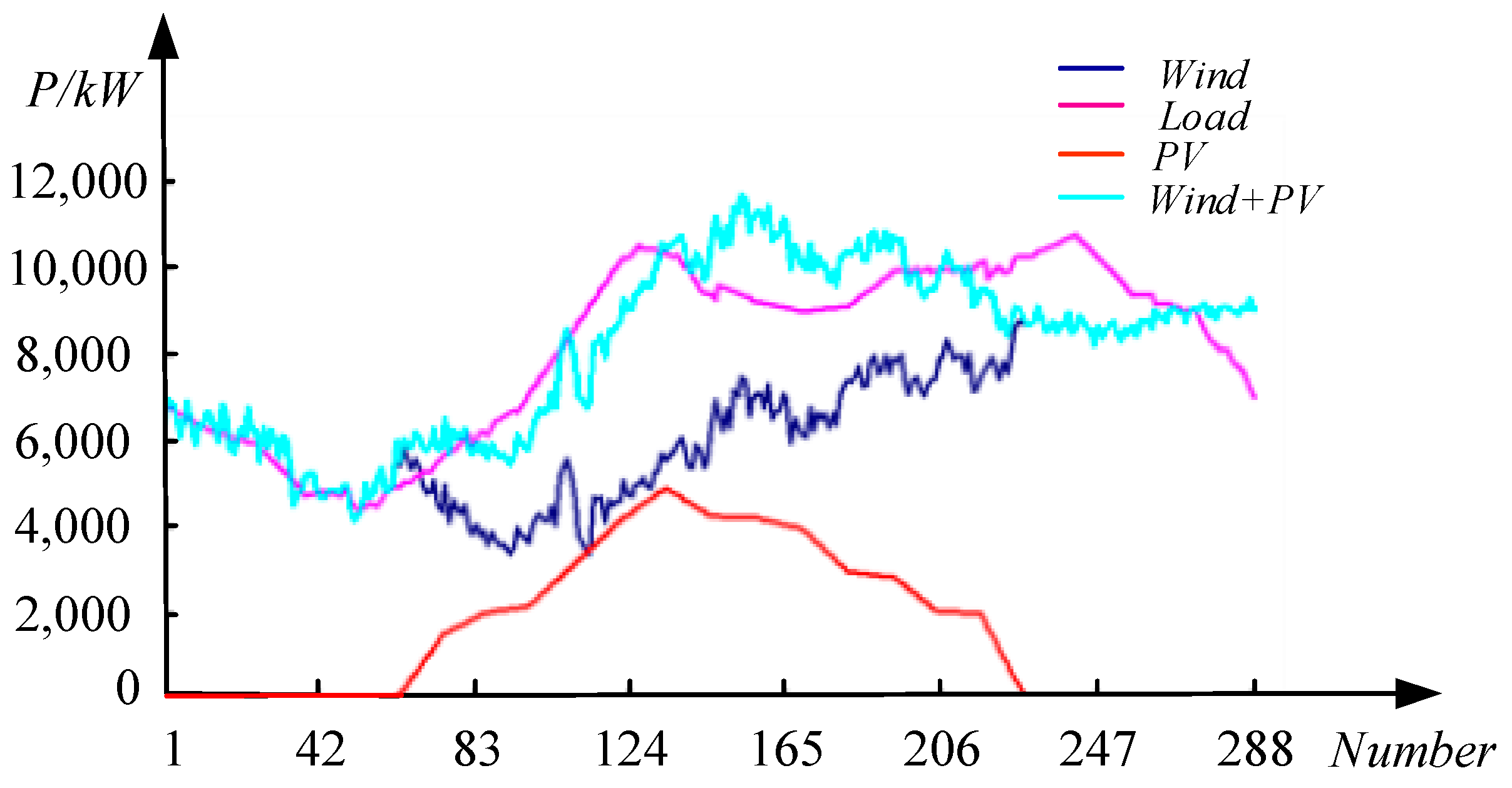
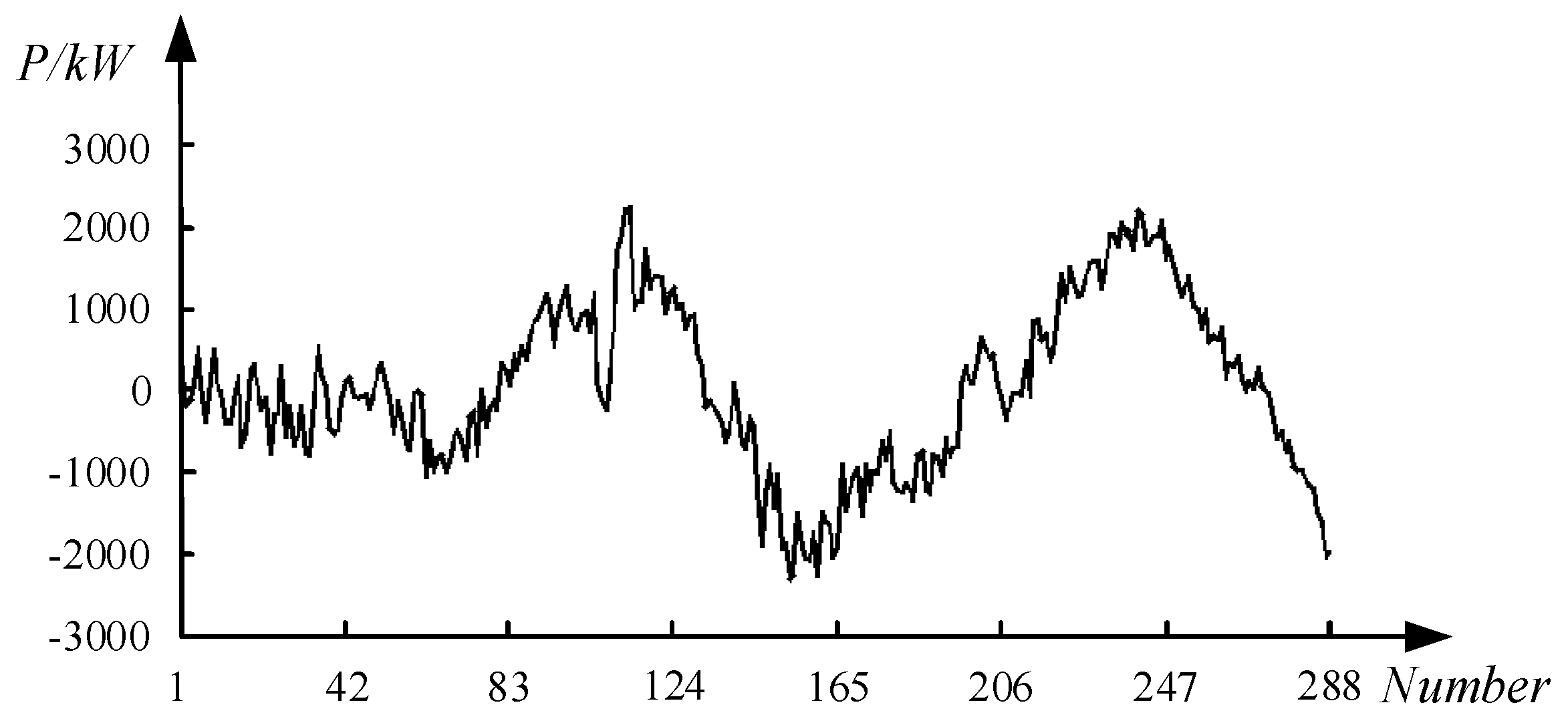
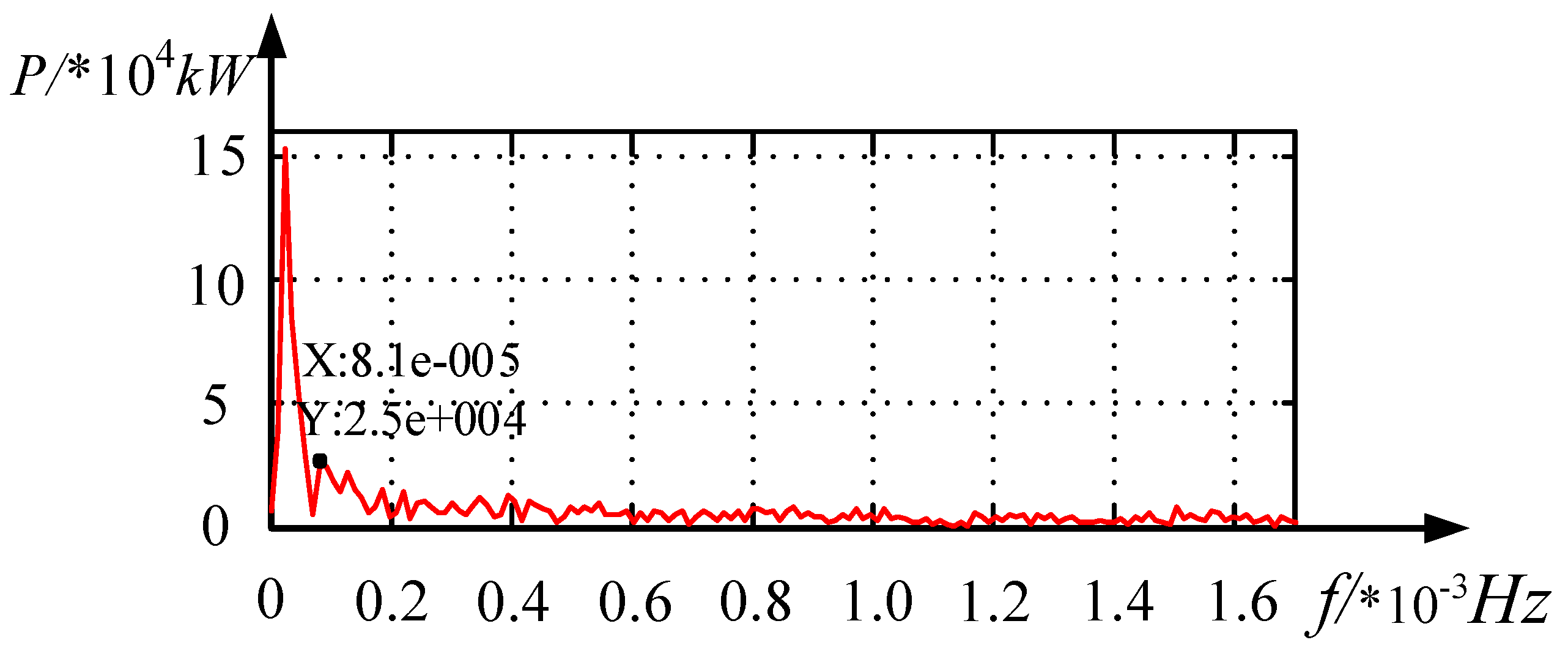
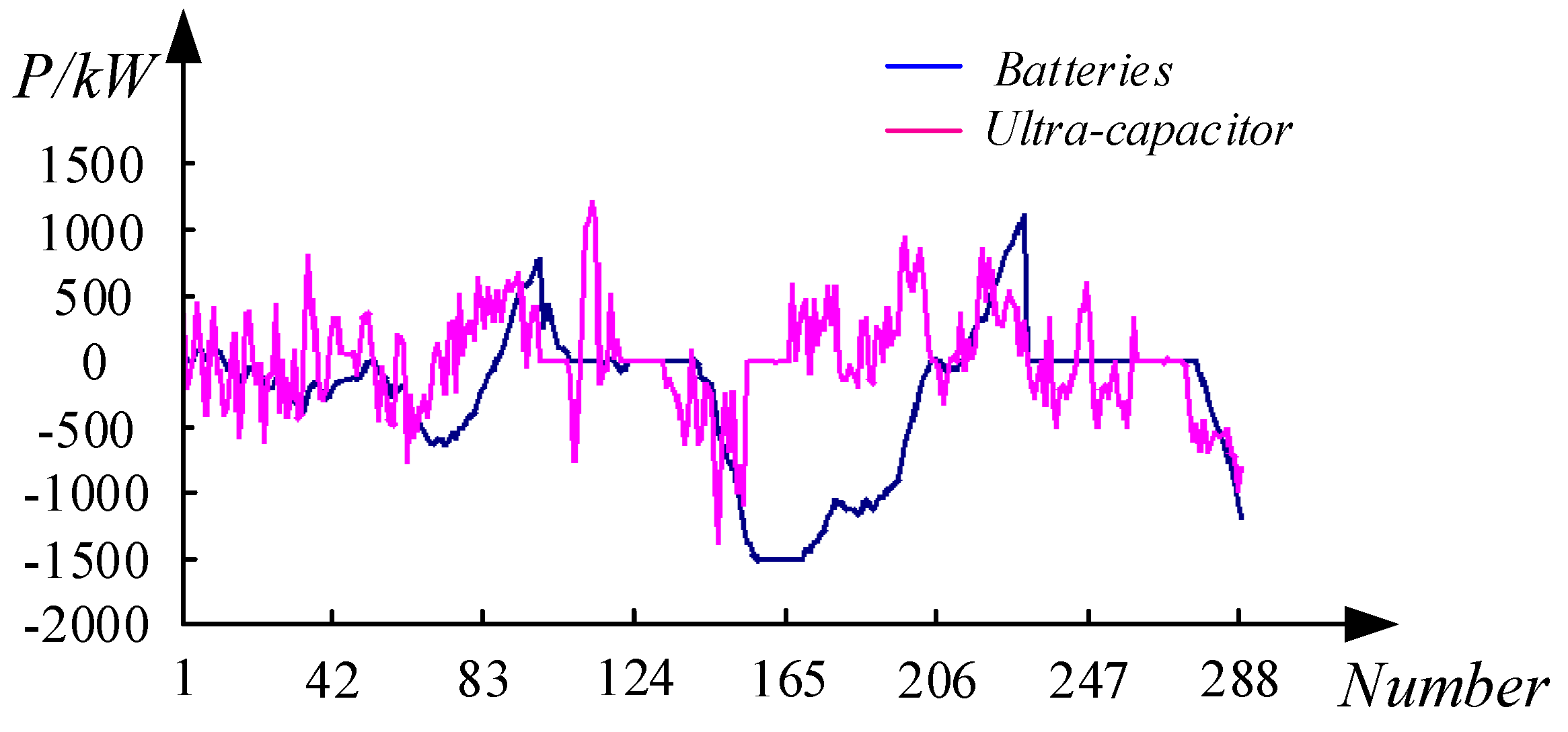
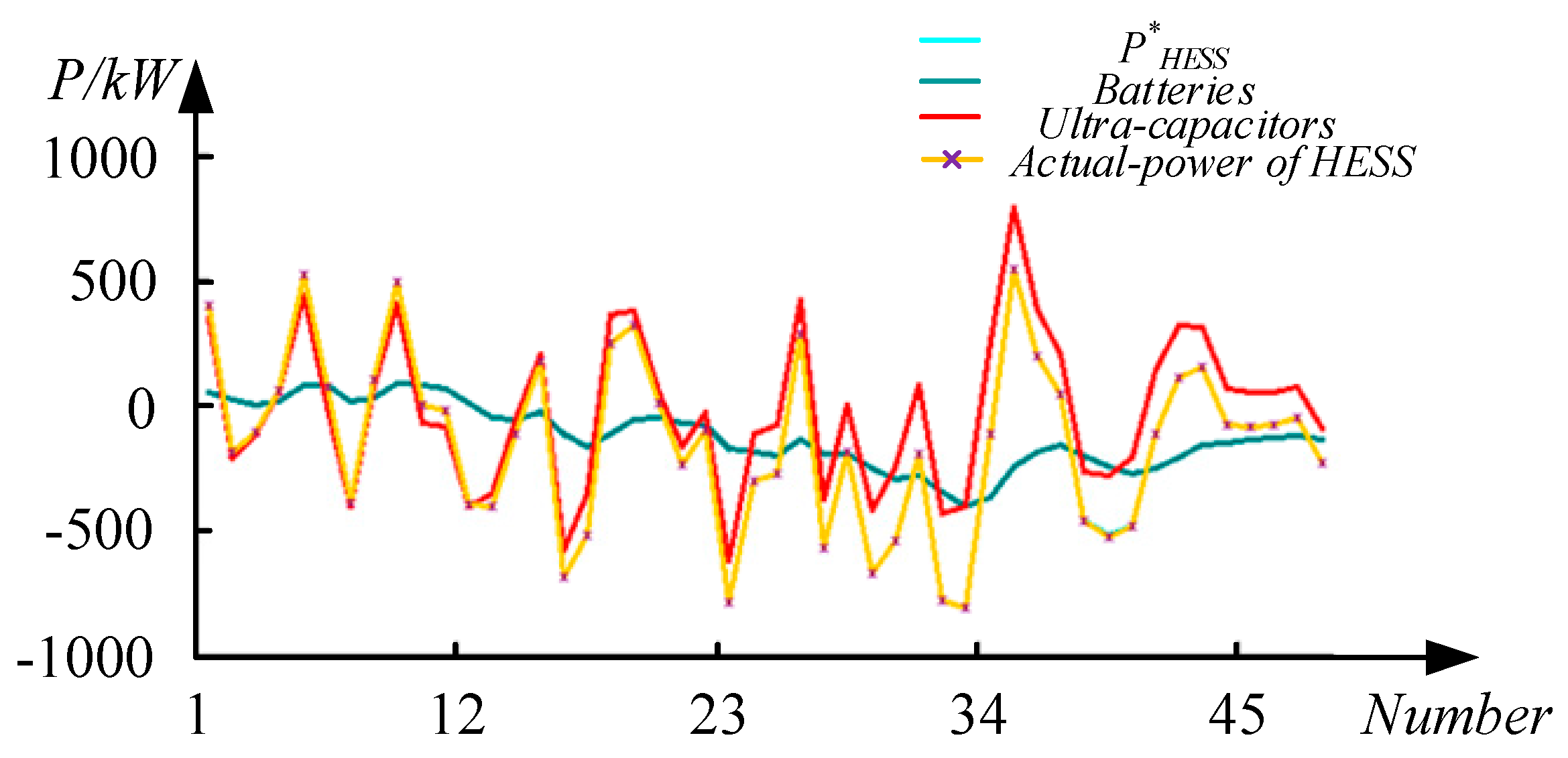
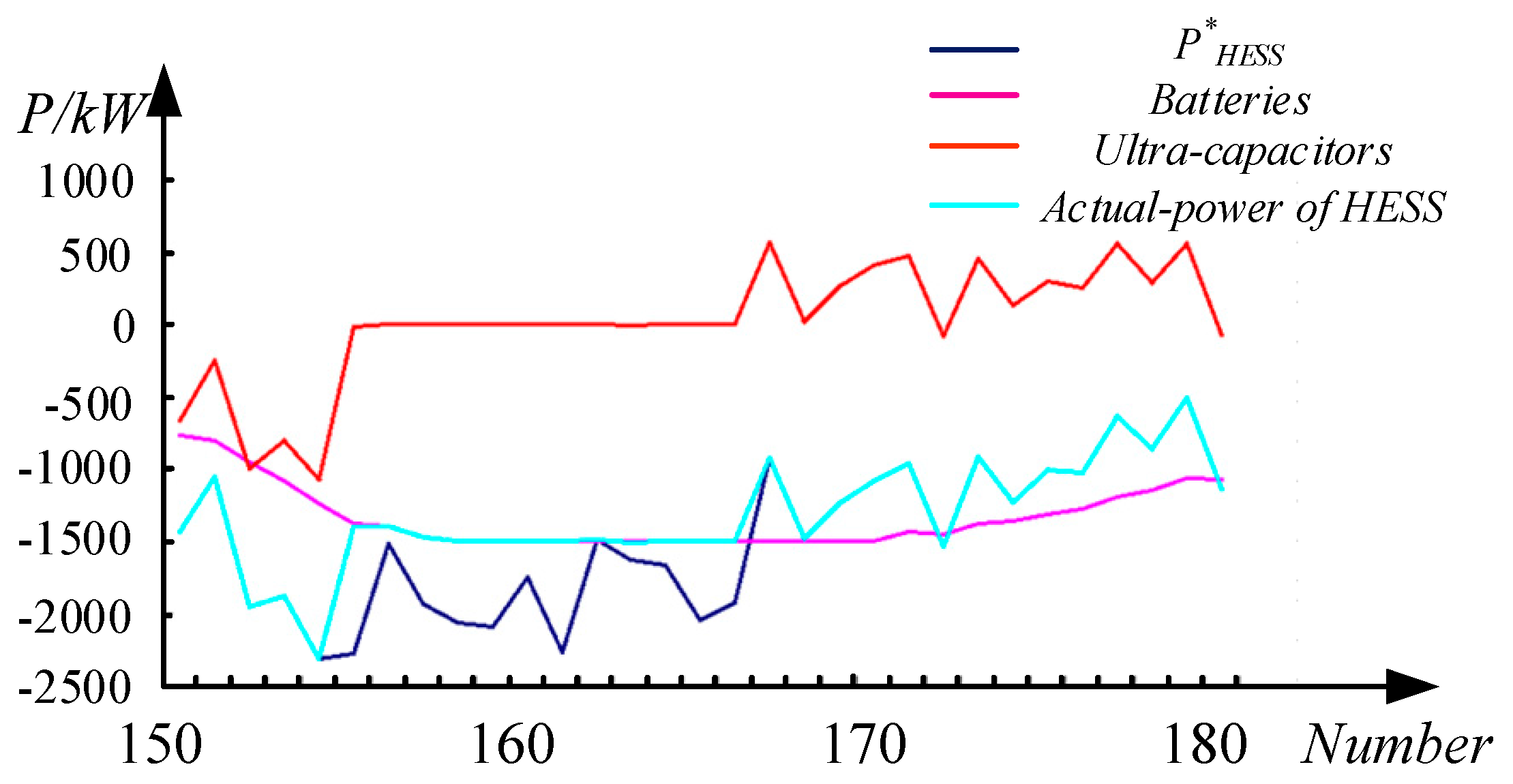
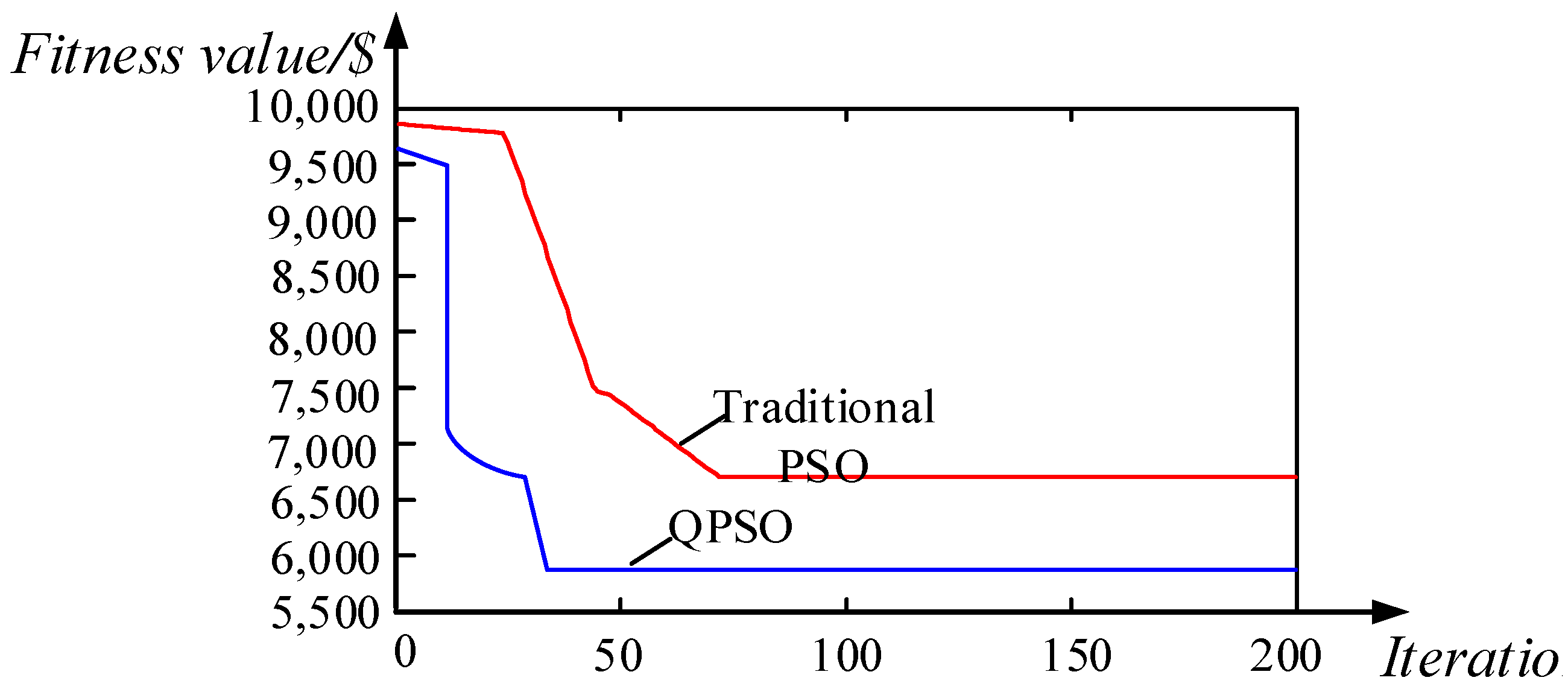
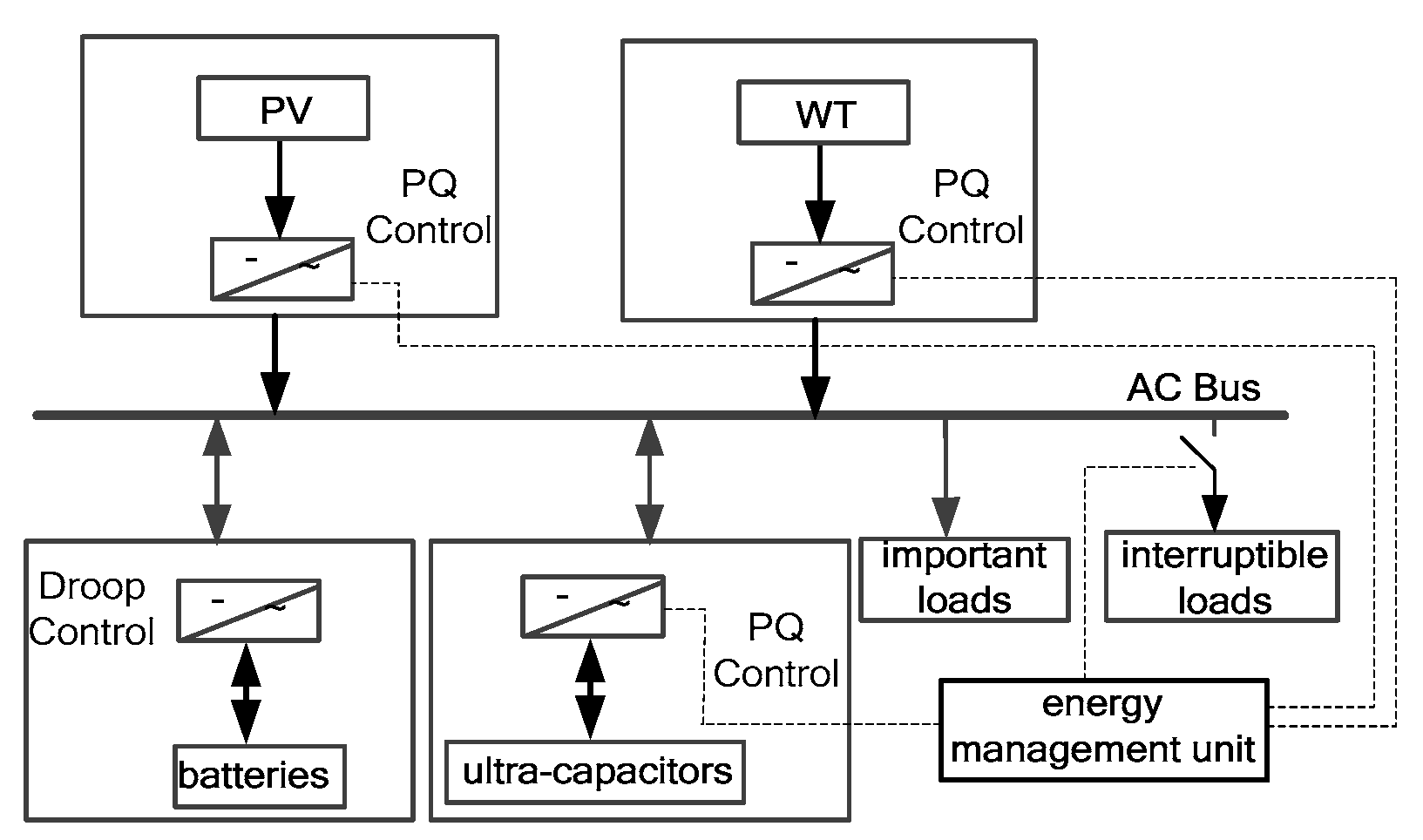
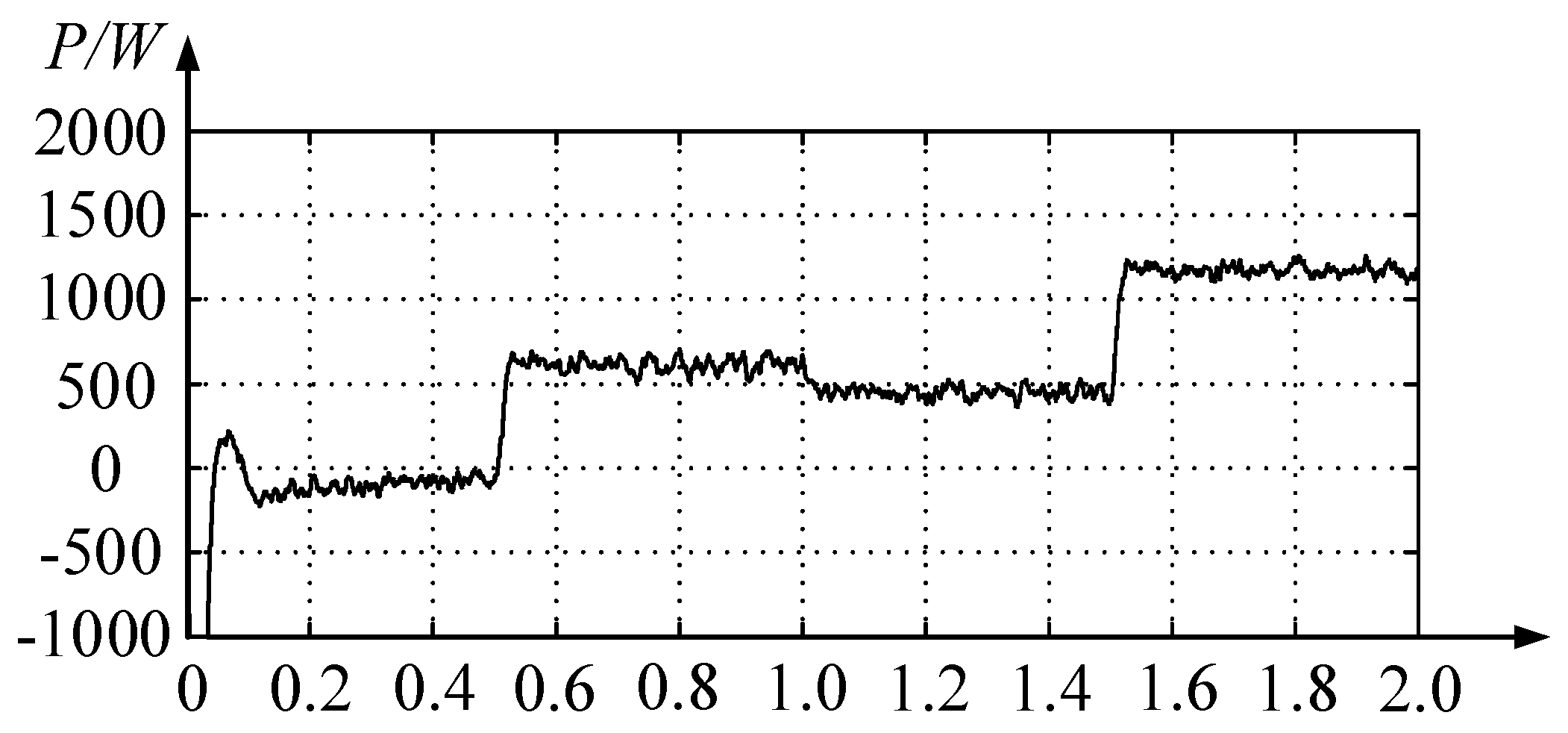
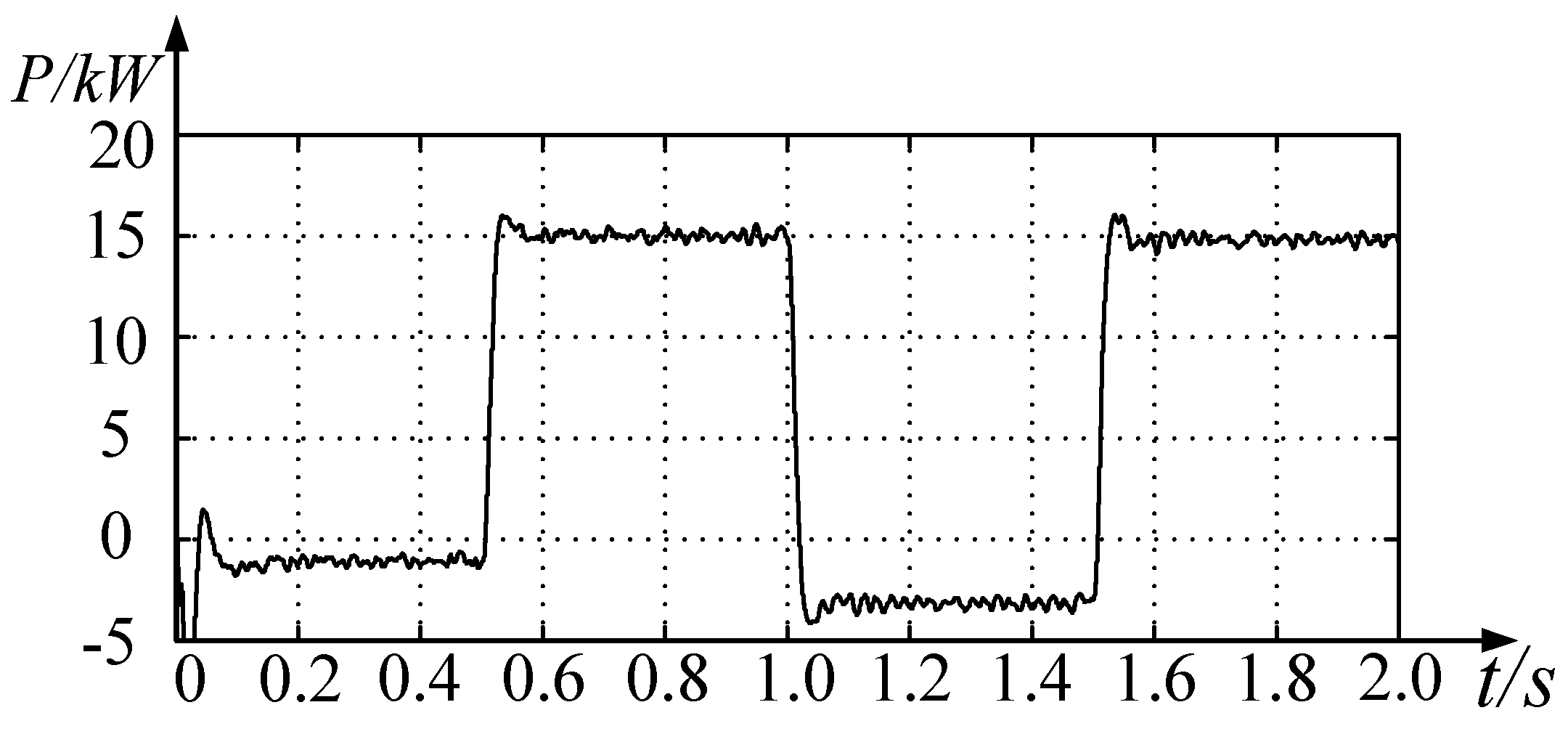

| Parameters | Battery | Ultracapacitor |
|---|---|---|
| Rated power/kW | 1500 | 2000 |
| SoCmax | 0.80 | 0.95 |
| SoCmin | 0.20 | 0.05 |
| Charging efficiency/% | 70 | 98 |
| Discharging efficiency/% | 80 | 98 |
| Depreciation rate/% | 6.70 | 8.00 |
| Operation coefficient | 0.10 | 0.01 |
| Maintenance coefficient | 0.02 | 0 |
| Price/$/kWh | 670 | 4000 |
| Algorithm | Batteries/kWh | Ultracapacitors/kWh | Fitness (Daily Cost)/$ | Iterations |
|---|---|---|---|---|
| Traditional PSO | 9084.26 | 2196.52 | 6708.83 | 73 |
| QPSO | 7807.84 | 1985.16 | 5902.36 | 47 |
| Time | WT Power (P/kW) | PV Power(P/kW) | PV Power (P/kW) |
|---|---|---|---|
| 0–0.5 s | 9.6 | 2.4 | 10.5 |
| 0.5–1 s | 21.1 | 3.7 | 40.2 |
| 1–1.5 s | 23.5 | 6.7 | 27.3 |
| 1.5–2 s | 12.2 | 4.1 | 32.1 |
© 2018 by the authors. Licensee MDPI, Basel, Switzerland. This article is an open access article distributed under the terms and conditions of the Creative Commons Attribution (CC BY) license (http://creativecommons.org/licenses/by/4.0/).
Share and Cite
Wang, H.; Wang, T.; Xie, X.; Ling, Z.; Gao, G.; Dong, X. Optimal Capacity Configuration of a Hybrid Energy Storage System for an Isolated Microgrid Using Quantum-Behaved Particle Swarm Optimization. Energies 2018, 11, 454. https://doi.org/10.3390/en11020454
Wang H, Wang T, Xie X, Ling Z, Gao G, Dong X. Optimal Capacity Configuration of a Hybrid Energy Storage System for an Isolated Microgrid Using Quantum-Behaved Particle Swarm Optimization. Energies. 2018; 11(2):454. https://doi.org/10.3390/en11020454
Chicago/Turabian StyleWang, Hui, Tengxin Wang, Xiaohan Xie, Zhixiang Ling, Guoliang Gao, and Xu Dong. 2018. "Optimal Capacity Configuration of a Hybrid Energy Storage System for an Isolated Microgrid Using Quantum-Behaved Particle Swarm Optimization" Energies 11, no. 2: 454. https://doi.org/10.3390/en11020454
APA StyleWang, H., Wang, T., Xie, X., Ling, Z., Gao, G., & Dong, X. (2018). Optimal Capacity Configuration of a Hybrid Energy Storage System for an Isolated Microgrid Using Quantum-Behaved Particle Swarm Optimization. Energies, 11(2), 454. https://doi.org/10.3390/en11020454





